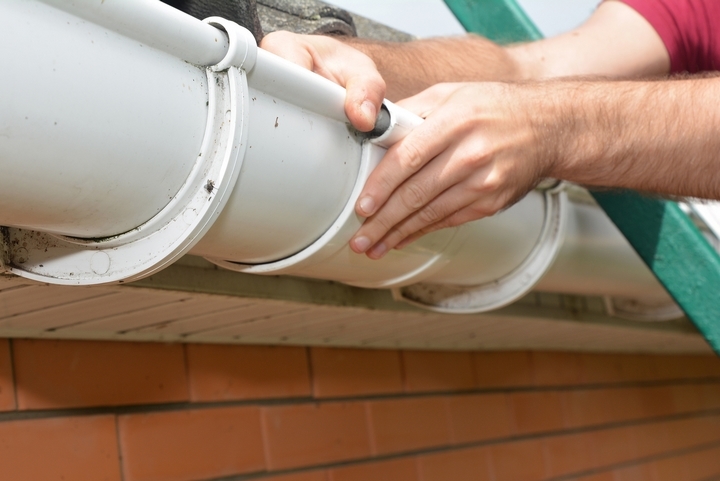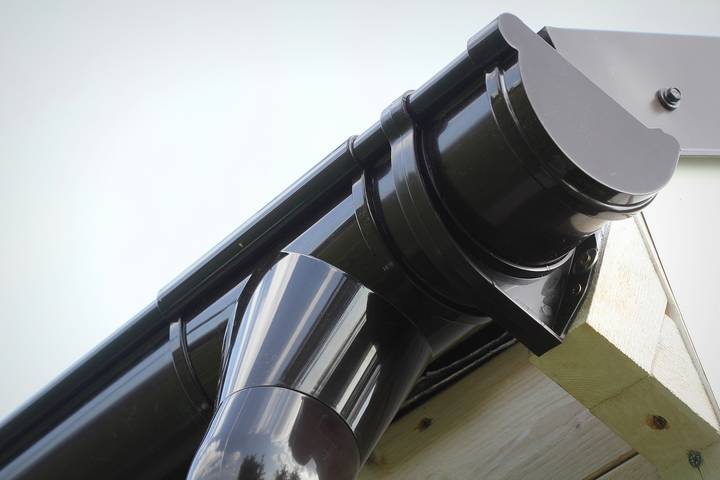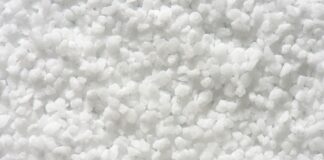An eavestrough is a gutter usually installed under the edges of a roof to collect water from the roof to the designated areas, whether a drainage system or tank. As years proceed, this component tends to sag and may not function as required. It may even fall if not managed, calling for a reinstallation or disruption of the drainage scheme.
It’s only best to fix it early enough to avoid such inconveniences. Below are the details regarding the repair procedure.
What Causes Eavestrough to Sag?
Before you start the fixing, it’s best to understand what causes an eavestrough to sag over time. The most common reason is accumulated debris that puts too much weight on the components until the gutter cannot bear it anymore.
During winter, the heavy ice dams and snow also weaken it, and it may cause sagging if not attended to. Another reason for a sagging eavestrough is if somebody poorly installed it. Gutters made from low-quality materials also tend to subside sooner than the standard and high-quality ones.
How to Fix a Falling Eavestrough
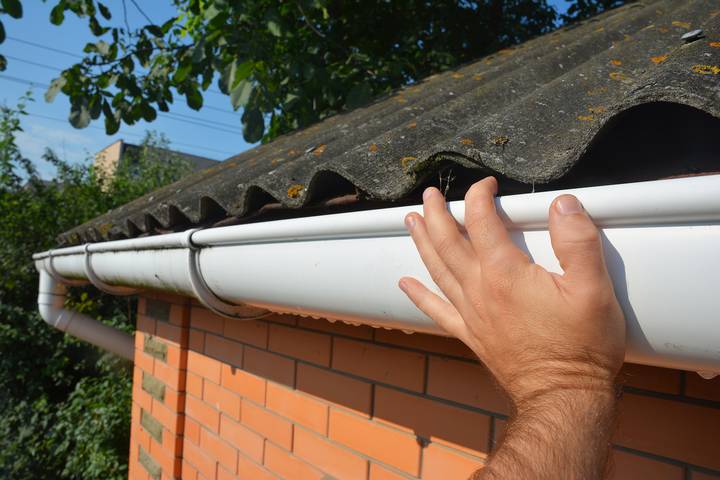
So, how can you tell that your gutter is gradually slumping and needs repair? Some obvious signs include when it appears slightly inclined from its original position or detached from the main board or roof edges. A sudden presence of insects known to be fond of water, like mosquitoes, could mean some debris/water is standing within the eavestrough due to sagging.
Other signs include mould growth due to improper drainage, leaks from the gutter, or visible damages like dents or cracks. The materials needed to fix a sagging trough include a screwdriver, hammer, ladder, sealant, nails/screws, and pry bar. Others are gutter fasteners, working gloves, a caulking gun, a putty knife, a bucket, a level, a marker/pencil, a wire scrub brush, and a cordless drill.
Examine the Gutter

The first step in fixing a sagging eavestrough is to examine it keenly to understand the key issues. As highlighted above, the slumping doesn’t occur by itself but is caused by several factors.
Learning why the gutter has weakened can help you devise a more reliable solution. Look at all the components, from the screws, nails, hangers, brackets, and the board itself. By the end, you’ll have established the fundamental causes and how to repair them.
Measurements
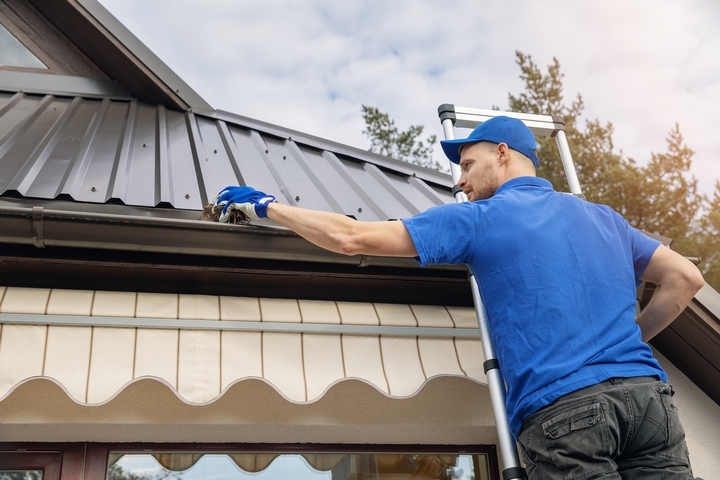
The next step is measuring the crucial distances ahead of the repair. It often includes the distance between hangers and fasteners, whereby the latter should not be far than 3 feet away from each other.
These essentials are attached to the fascia board to support the gutter. You should also observe if it’s stable enough to continue functioning. If the board deteriorates, you might have to replace it before proceeding with the repair.
Eavestrough Cleaning
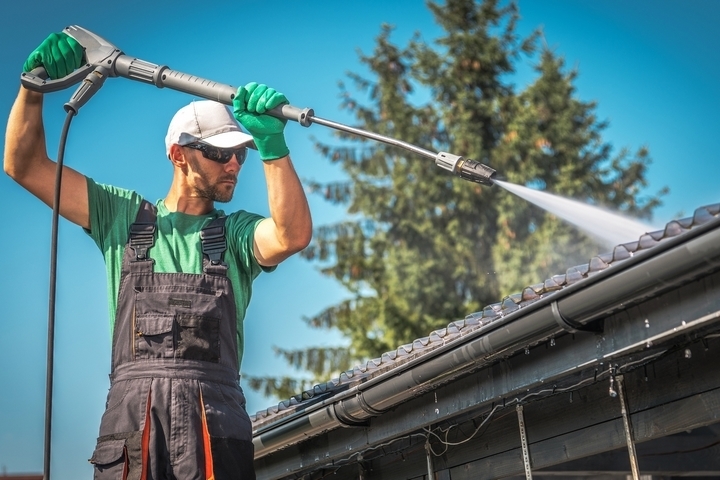
Here, you undertake intense cleaning on the trough components. Sometimes, this can be one of the solutions to a sagging gutter if it is weakening because of the accumulation of dirt and debris.
It would be best if you didn’t leave the dirt you’ve cleaned around the trough but put it in a bucket for disposal. Use the scrub brush to remove the dirt further, and rinse the trough with a garden hose. Professional cleaners across the town can offer eavestrough cleaning services, but you can still do it yourself when you have the right tools.
Fix the Screws and Brackets

The fourth step is fixing the screws/spikes since the previous ones have deteriorated following the sagging. Get rid of those that appear pretty rusty and worn out and replace them with new ones into the old holes and follow the same for the screws.
When drilling new holes, it’s best to do it above the previous ones. When fixing the brackets, you simply replace the old ones with brand-new ones, then secure them with a pry bar.
Work on the Hangers and Then Seal
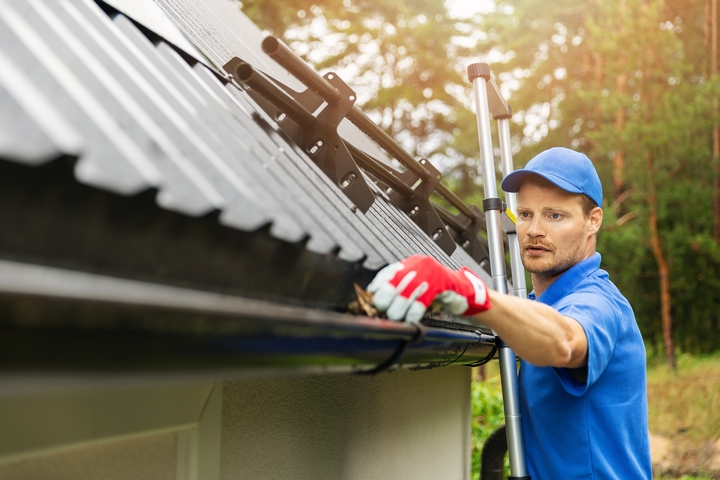
Gutter hangers are the element that offers support and stability to the entire eavestrough, usually located under the edge and behind the back. A cordless drill can be used to eliminate the previous ones and put in new ones.
In case of leaking end caps, you can seal them with high-quality sealant, then add a coating to deter rusting. Some eavestroughs may require replacement, especially if the damages are beyond repair. That will save you from constant fixing and inconveniences.
How to Prevent Eavestrough Sagging
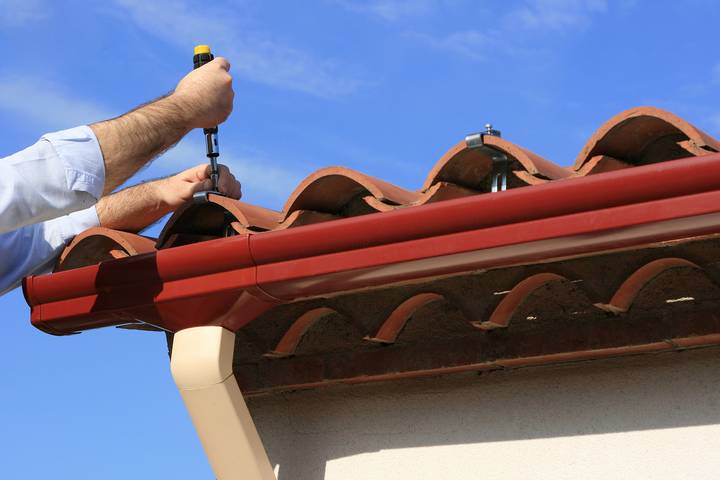
All these issues are better off prevented than fixed. Ensure that the trough and adjacent components are cleaned more regularly (thrice a year) and involve a professional after a significant weather issue.
It’s also advisable to clear long branches that are overgrowing above the gutters, as they can fall on them and cause sagging. Look out for possibilities of a fall and address them early enough before they progress. Lastly, eavestrough maintenance would be ideal for preventing sinking and other related problems.
Fixing a sagging gutter is relatively easy when you have the correct details regarding how to go about it. Note: The procedure involves working from a ladder and handling dangerous tools like drills. Therefore, you should be careful not to injure yourself or instead engage a professional for the job.


